Dec. 29, 2024. This is the morning I’ve waited for since Beat and I arrived in Fairbanks ten days ago. My 3 a.m. trip to the outhouse was shrouded in flurries and fog, but now the predawn sky is filled with stars upon stars. As I walk away from the cabin in my down booties and bare legs, a lead blanket of cold wraps around my body. I inhale deeply, letting the razor-sharp air sear my throat before filling my lungs with clean oxygen. This dense air holds a silence so expansive that I can hear the subtle crunch of snow from an animal seemingly miles distant. The hairs in my nostrils freeze before I can exhale. I hobble on my rapidly numbing legs to look at the outdoor thermometer. It’s 33 below zero.
It is the third day of our second cabin trip in Alaska’s White Mountains. Rather than march from cabin to cabin as we often do on these trips, we are spending three nights at Cache Mountain Cabin, a 12-foot by 16-foot log structure on a forested terrace above O’Brien Creek. Its nearest contact with civilization is 19 miles away at the Steese Highway, where we hiked from the McKay Creek trailhead on Dec. 27. Like all cabins in the White Mountains Recreation Area, Cache is as rustic as they come — equipped with wood bunk beds, a table and benches, cook stove, lantern, a saw, ax, broom, wood stove, and outhouse. We bring our own battery-powered lights, stoves, and a handsaw because the public-use cabin amenities are not to be relied on. Users must supply firewood via the sparse boreal forest surrounding the cabin. Cabin life is hard, even when standing still. I’d venture — especially when standing still.
Yesterday, Beat spent six hours hauling 60 pounds of dead spruce trunks from a burn more than three miles from the cabin, then sawing the haul into stove-sized pieces. I’d spent the day frivolously hiking 22 miles to Cache Mountain Divide and back, not understanding how much work Beat planned to accomplish before I returned. I felt guilty and offered to do my share of the work today. But Beat had gathered more than enough if we burned it sparingly in the evenings and mornings. So it was better to spend all day in the minus-a-lot outside, walking to stay warm, than laboring to keep the cabin warm against this crushing cold.
On a day like today, we knew there was no place to be but the Cache Mountain Divide. Even if I’d done the same hike yesterday, the landscape was shrouded in fog and flurries, so today would be like walking through a new world. We set out at 8:30 a.m. under a sky as black as midnight and the galaxy glittering overhead. My layers number three on top, two on my legs, and six over my feet and lower legs. This doesn’t seem excessive, but I still need to open zippers and vent heat emanating from my core. Steam from perspiration and respiration pours into the subzero air. Beneath my feet is a lightly traveled snowmobile trail with loosely packed snow that resists giving ground to my straining leg muscles. Believe me or don’t, but this is the hardest exercise I do. Snow hiking never fails to demand the limits of my cardio fitness and strength combined. Even at 30 below, I become a heat factory.
The excessive physical demands of snow hiking are why I love it so. I settle into my rhythm and my brain quiets. There is nothing but the squeaky crunch of cold snow and the surreally lit landscape rolling out before me. Civil twilight breaks at 9:35, light enough that I can switch off my headlamp. For the next 90 minutes, the pink brush of alpenglow will tinge the mountaintops before slowly creeping down the slopes. Up here, the sun is a deliberate and unhurried artist. Strokes of sunrise that happen in mere seconds at mid-latitudes take long minutes up here. I move in strenuous slow motion and watch light trickle from the summits, thinking this is what it feels like to slow down time.
We see only two people all day. They are fur trappers on snowmachines. The first idles beside me to exclaim, “Are we having fun yet?” He is wearing Carhart overalls and original military-issue Bunny Boots, and his goggles are rimmed with ice. “I wondered who the crazy fuckers were who were out here walking!” he continued, and I laughed. I asked him where he was headed, as one does in these parts. He gave me a vague answer about “going around the loop” before moving on.
Later, I saw fresh snowmachine tracks veering into the woods toward rudimentary plastic and wire traps, and I realized the snowmachiners’ intentions. I wonder why he didn’t just tell me they were running a trap line. Maybe he thought because I was a crazy fucker on foot, I’d be judgy about his lifestyle. And I’m not. I support their endeavor. Beat wears a fur ruff. Hell, legal fur trapping is more sustainable than flying thousands of miles to walk in the woods. I know this. And yet, I admit that I checked every trap from that point on and fantasized about risking my life to save a caught lynx from certain death. (I saw no animals in the traps.)
We keep walking and the morning light keeps sinking. Sunrise happens at 11:08 a.m., but we don’t catch it directly as we’re now deep in a canyon. I’m driven to hike faster. Maybe we can catch a hint of direct sunlight at the Divide. Between the low-angle sun and predominant cloud cover, I haven’t felt sunlight on my skin for 10 days. Alaskans go much longer than this, and I wonder how they survive. I am far from a sun-worshiper, but even I am beginning to feel the bone-deep craving for vitamin D.
Still, I wouldn't trade this day for a week in the Bahamas. Beat and I travel to Alaska after the Winter Solstice for a reason. This annual tradition started because Beat can take a longer vacation over the holidays, but it continued because the days when the light is lowest are the days when the light is most magical.
This year, Alaska has been a little stingy with the light. Our first trip in the Whites, a five-day hike on the western end of the trail system, was mostly cloudy, as were the few days in Fairbanks following. It was “warm,” too, which in these parts in December means temperatures largely stayed between 0 and +10 degrees. The warmth made life easier. The cabins could become hotboxes without as much effort. I could walk for 10 minutes while slowly munching on trail mix with my bare hands. I could walk to the outhouse in my underwear and not feel a desperate need to sprint back to the cabin before I’m done peeing.
Don’t get me wrong, I still love being in the Whites even when skies are gray and life is easy. But give me the hard life. Give me the high resistance of cold snow and tearing myself apart for plodding forward motion. Give me a fleece balaclava converted to an ice helmet and the need to time my snack breaks so my fingers don’t freeze solid. Give me the cold creep of a zipper I forgot to close and the fear of an invisible phantom that warns me not to make mistakes. Give me clear skies and magic light, and I will gobble it up greedily, insatiable.
A few minutes past “solar noon,” 12:53 p.m., Beat and I reach the summit of Cache Mountain Divide. The sunlight is as extensive as it will get, and still high above us on the mountainside. It’s a balmy -4F at this altitude above the inversion, but a light breeze makes it feel colder somehow. I pull up my face mask.
It’s a powerful feeling to be standing here, high in the mountains, dozens of miles deep in the wilderness on a day so “dark” and cold that even the hardened Alaskan trappers think we’re crazy.
I enjoy my favorite subzero trail snack, which is Jif peanut butter in a to-go cup, frozen to a rich and delicious disk.
Then it’s down, down, down, back the way we came, as sunrise fades seamlessly into sunset and alpenglow begins its slow retreat back up the mountains.
The strain of the past ten days is weighing me down. I’ve had stomach issues for the past two nights, sending me to the outhouse multiple times. I hope the distress is a result of fatigue and subsisting on large amounts of processed food rather than a virus, but I’m not yet sure. This second frivolous trip to the Divide was a risk, because I still need to hike myself out in the morning. I wonder if I’ll have the energy left to manage it. It doesn’t matter, though, because it’s not like I have a choice. Beat waits for me one more time at an open swamp, where he shares a sip of hot chocolate mocha that is miraculously still warm in his thermos. He mumbles something about it still feeling fairly warm down here and I ask him to check the temperature. It’s -26F.
How quickly we adapt to … well … anything. My legs are tired, my glutes and Achilles are tight, but I otherwise feel comfortable. My jacket remains unzipped and my facemask is pulled down. My hands are bare in my pole pogies and I can keep them outside to nibble on trail mix for long minutes. I am snacking when the trappers pass me again on return from their rounds.
“You guys are awesome!” the first one yells as he zooms past. Doubtlessly they noticed our crazy-fucker tracks punched all the way down from the pass, and we’re still marching steadily at least seven hours after they first saw us.
They’d pass Beat a mile later and offer to drive up to our cabin and start a fire in the stove for us. Beat laughed and told them that wouldn't be necessary, but later wished he had taken them up on their enthusiastic kindness.
Back at the cabin — 8 hours and 50 minutes for Beat, about 9 hours and 15 minutes for me — the deep cold has long sunk in. The large pot of water we left on the stove is half ice, and our breath hangs thick in the air as we mill about, slowly replacing ice-encrusted layers with down pants and parkas. The fire takes a while to get going. I sit on my bunk and stare into a void. I am not excited about having to gulp down another freeze-dried meal; my stomach lurches and gurgles while I eat. But I know it’s going to be cold in this cabin overnight — we plan to run the stove for only a few hours and then rely on our winter sleeping bags — so I know I’ll need decent glycogen stores to keep me warm overnight.
Still, I am as content as I can be — glad to be warm in a cabin, glad to share a bagged meal around the stove with Beat, and glad for every gift this difficult and beautiful year has given me. I think only one thing can make this perfect day better. When I step outside at 9:30 p.m. with a toothbrush and a cup of warm water in my hands, I see it.
For more than a half hour, the Aurora dances overhead. It’s as dynamic a light show as I’ve witnessed, green and red waves shimmering across the starry sky. Beat and I wrap ourselves in all of our down clothing and stand in the -34F night for as long as we can endure. Even as I shiver, the mesmerizing beauty holds the rest of me frozen in awe.
Some days are so incredible, so soul-rending, that you feel like they could carry you through an entire year. I don’t know what 2025 will bring, but I’m ready to walk into it with my eyes wide open. I’m ready to follow the waves of light where they take me.

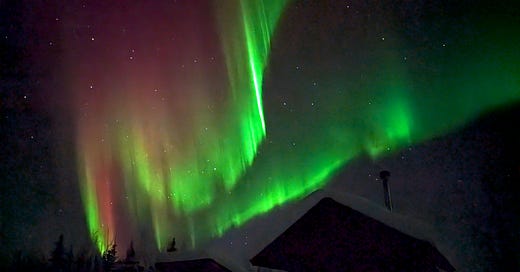




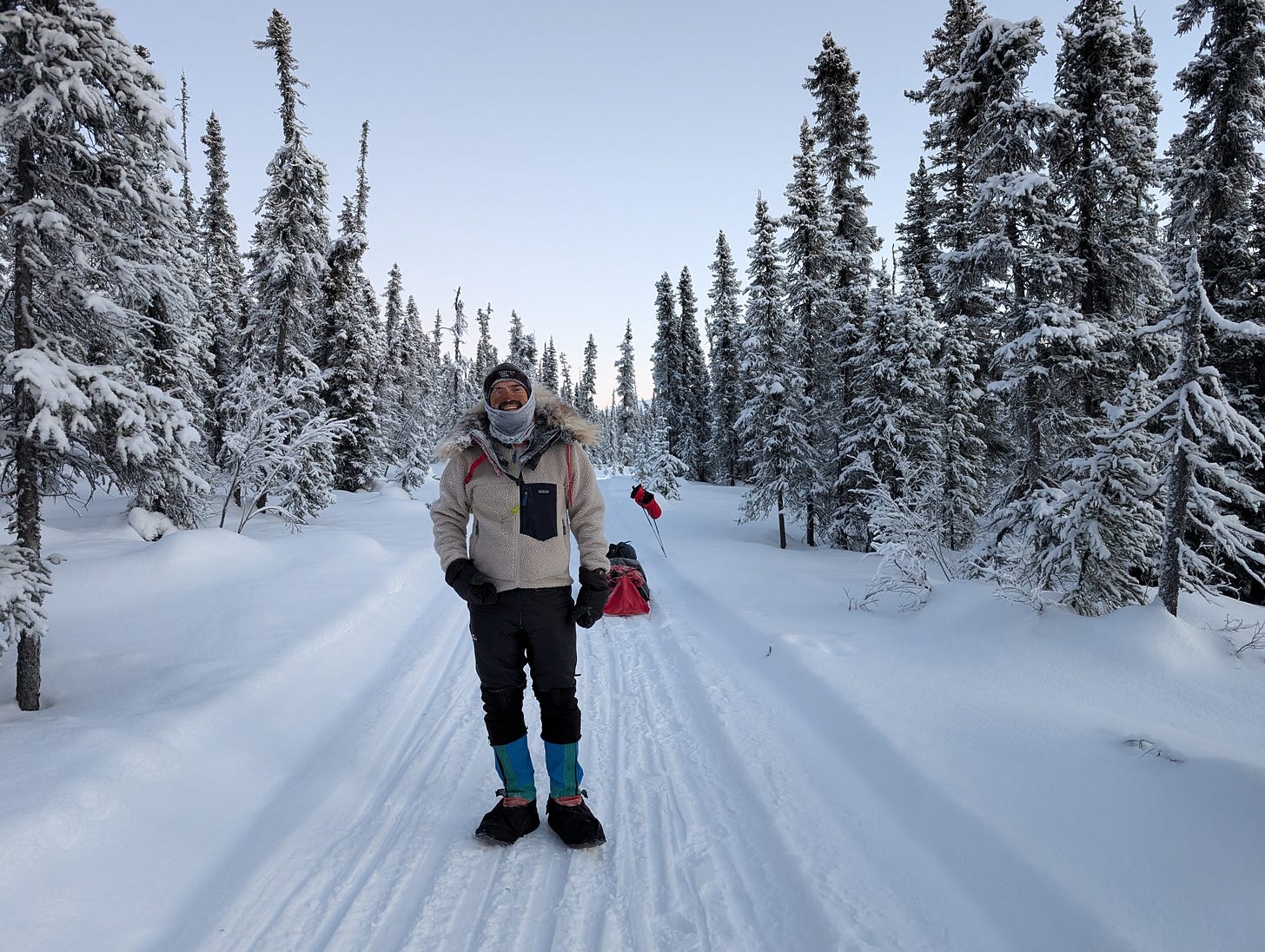
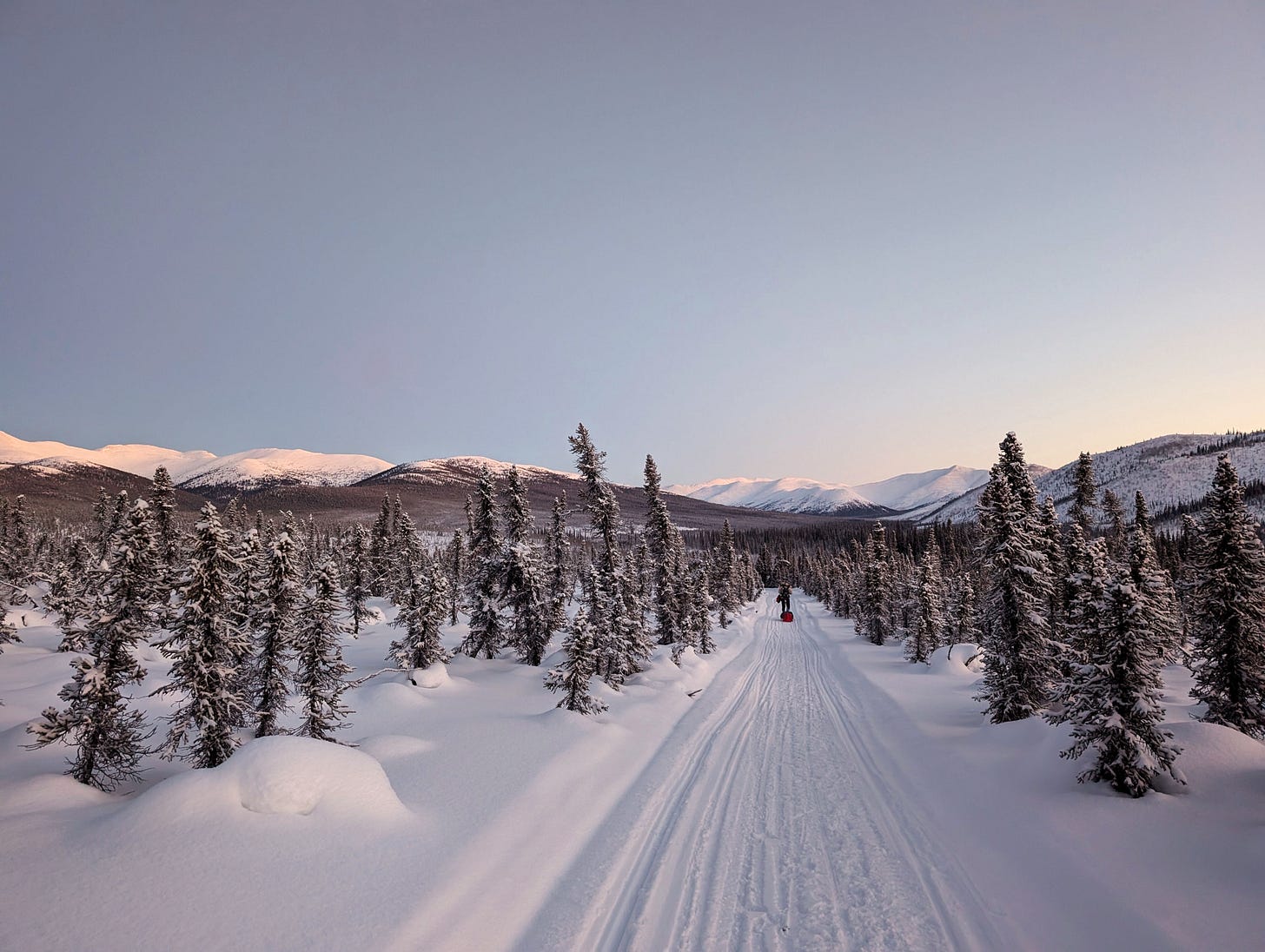
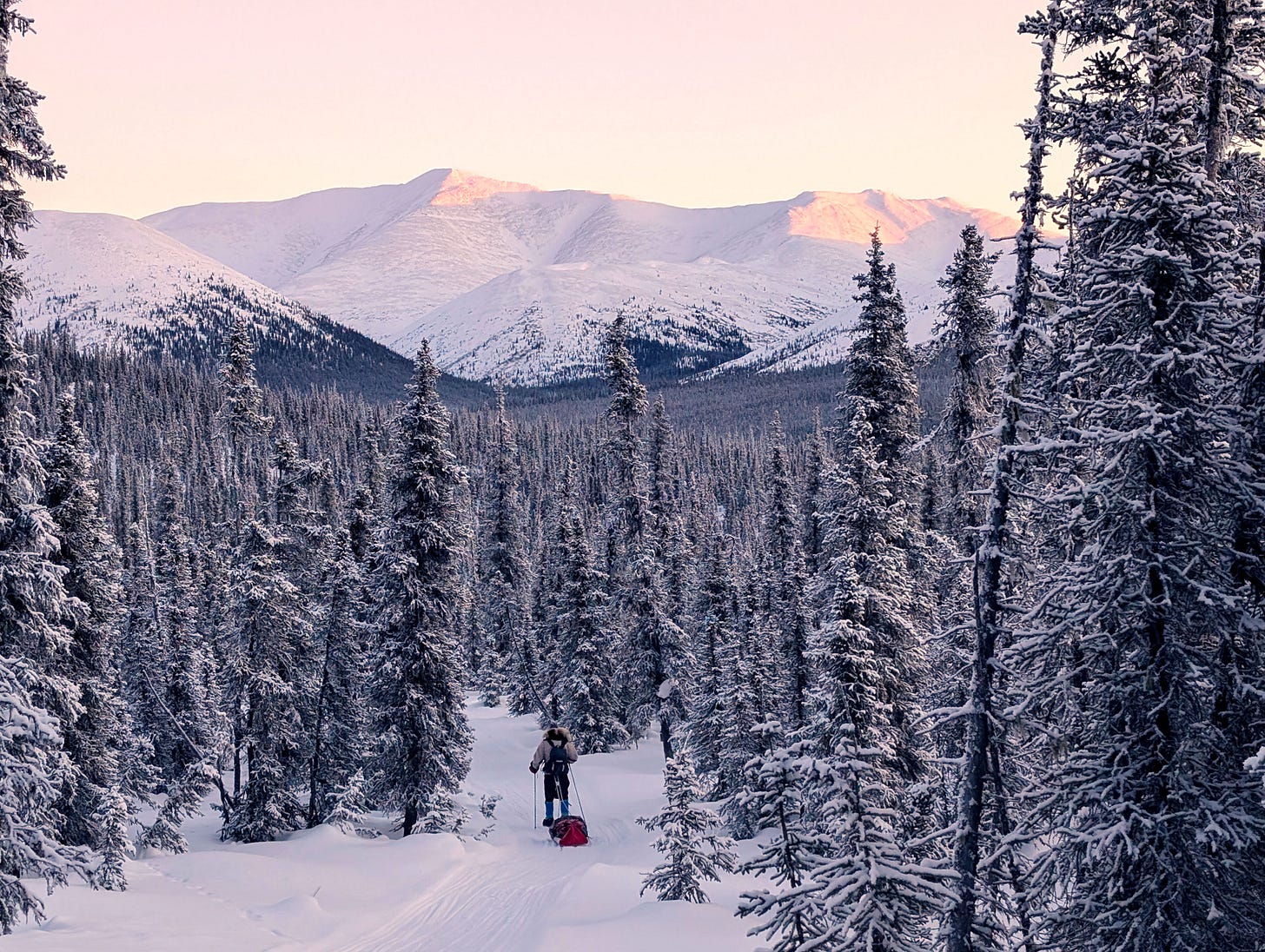
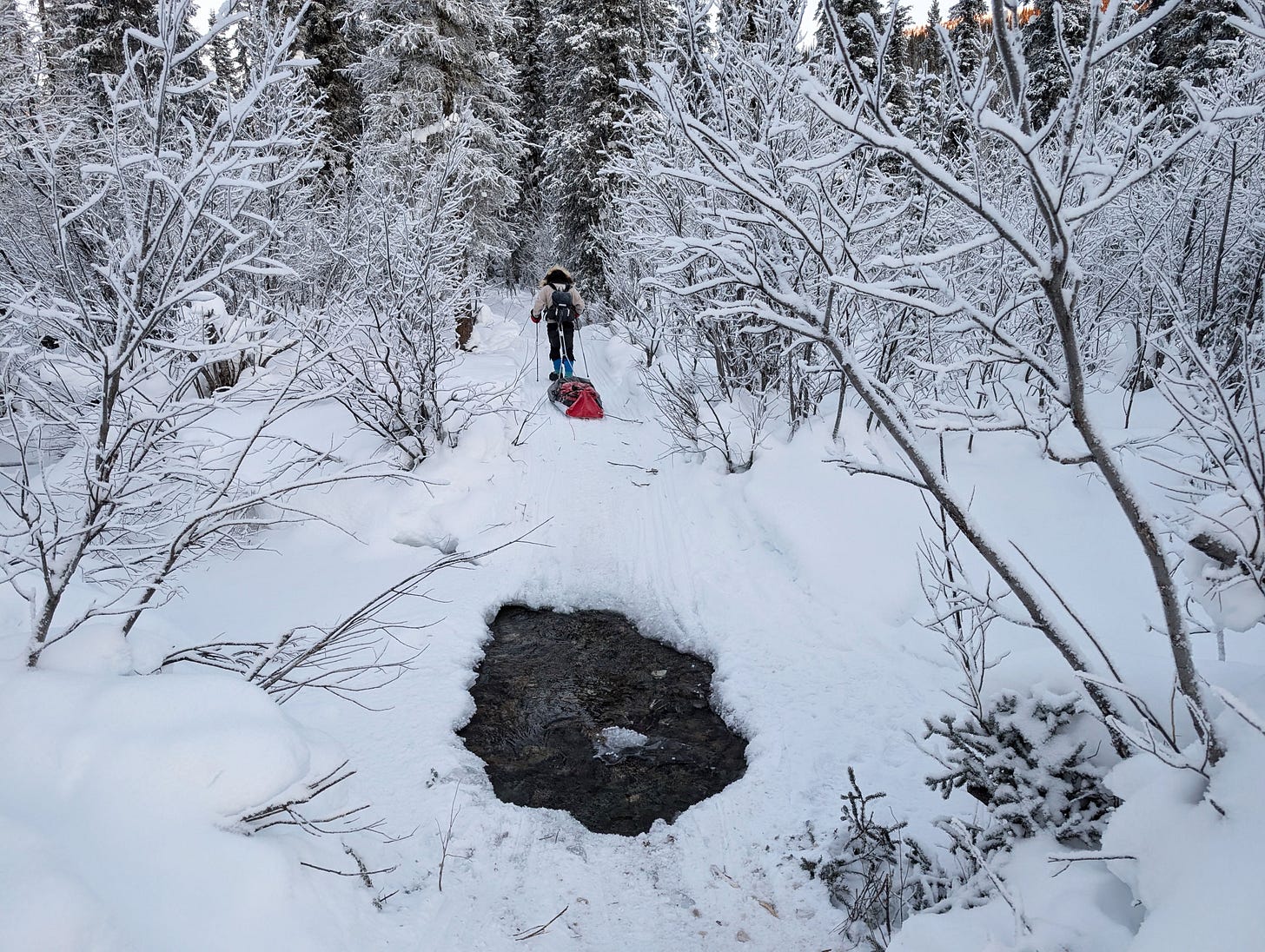
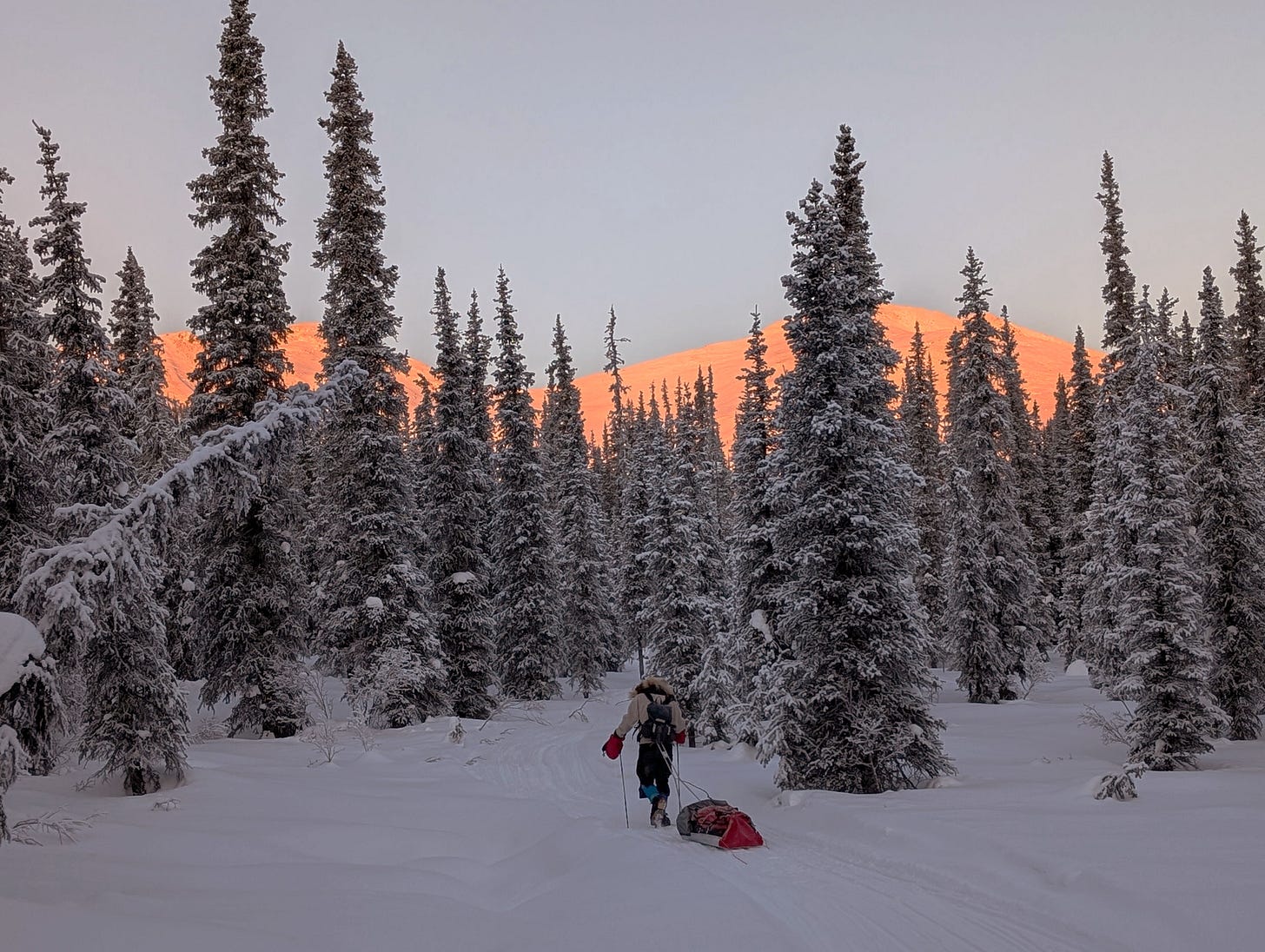
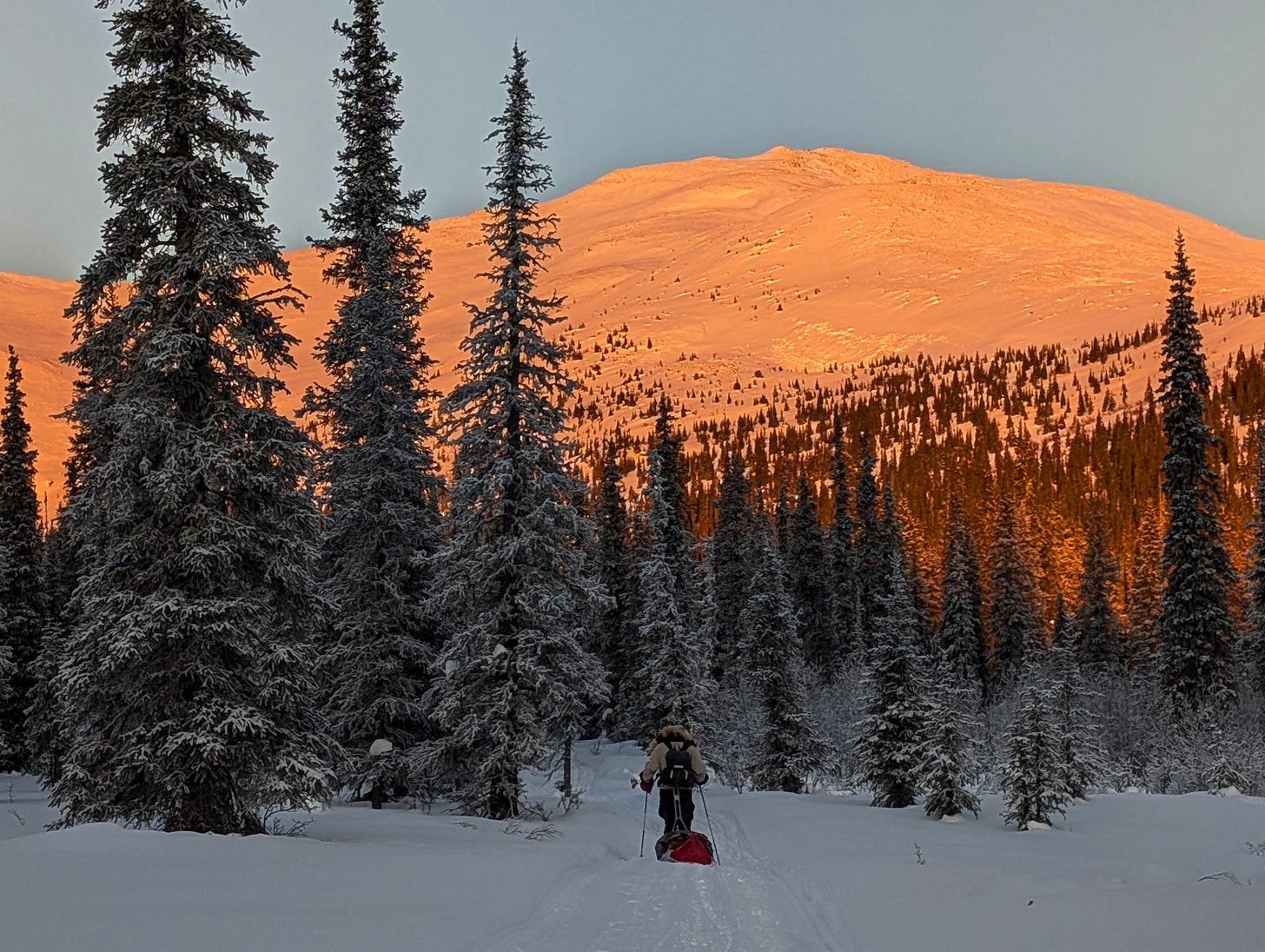
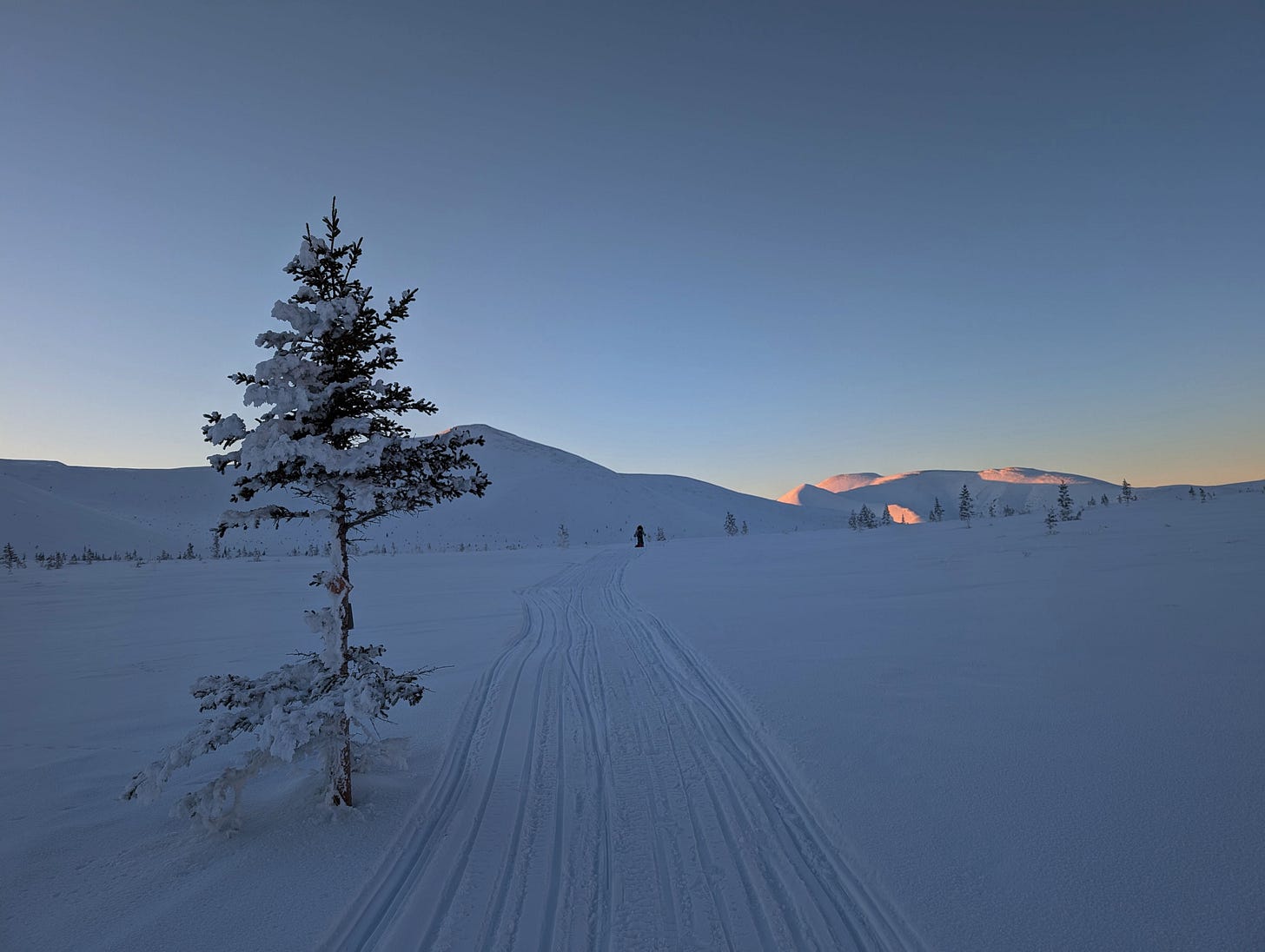
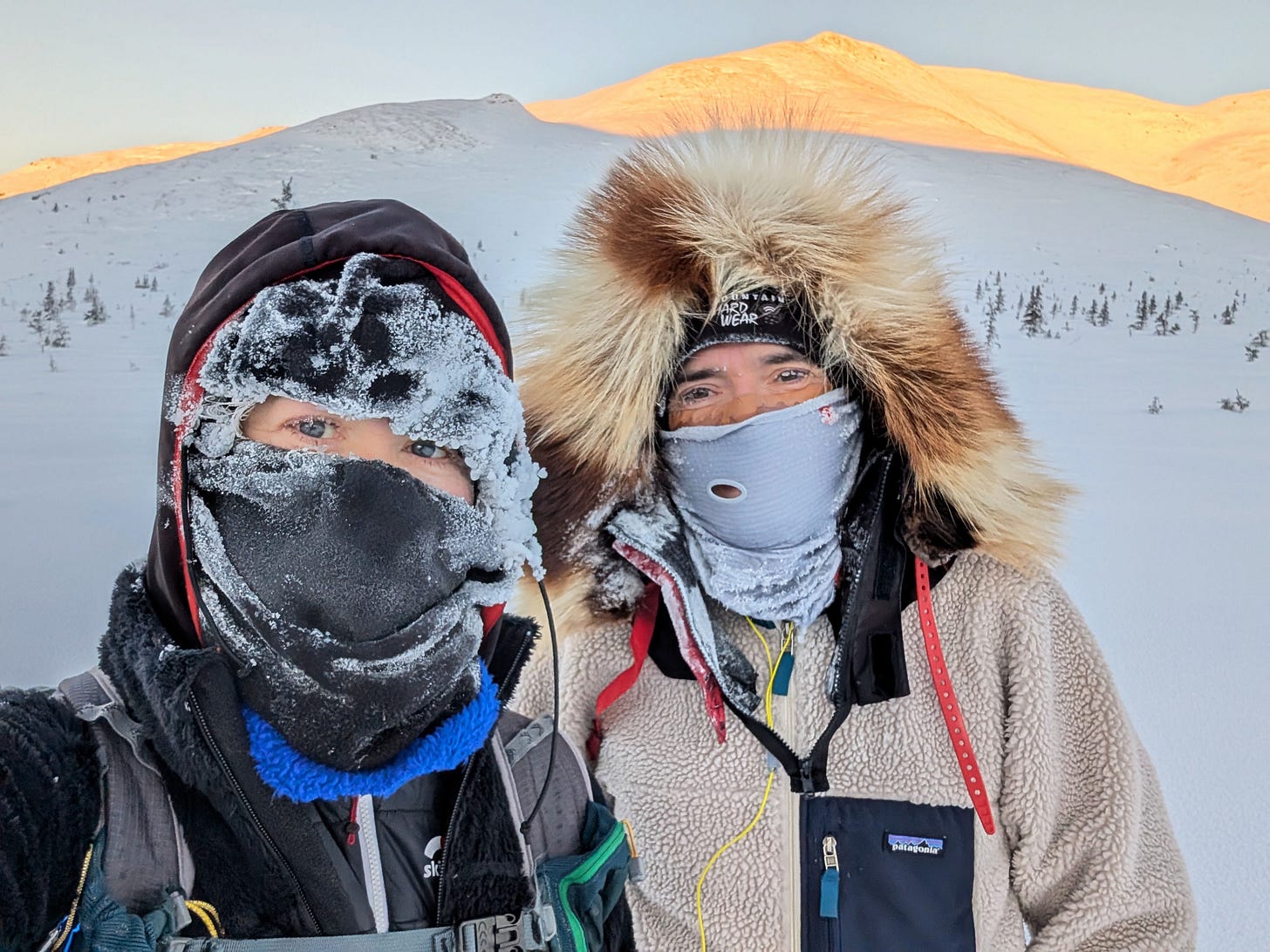
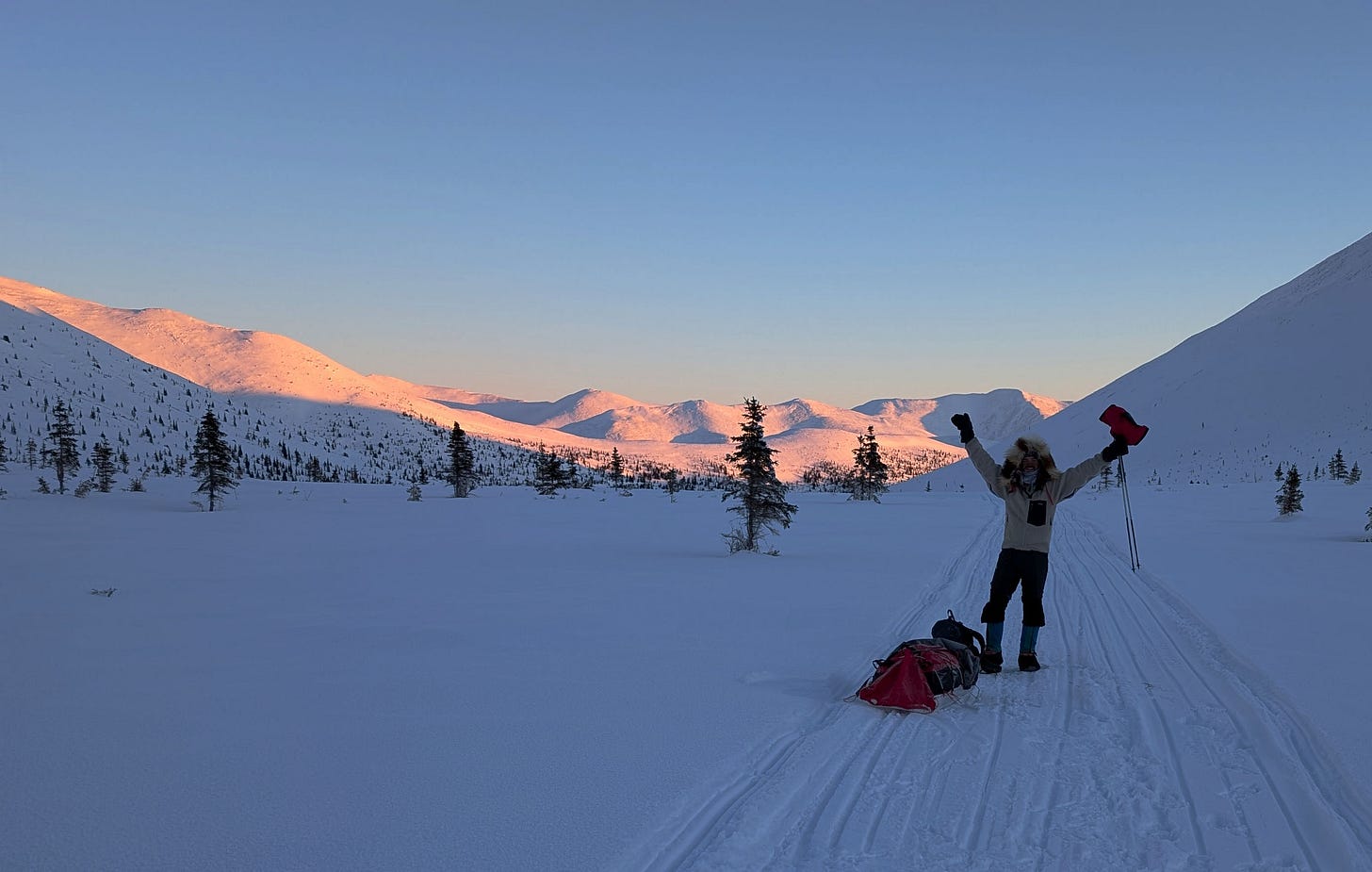
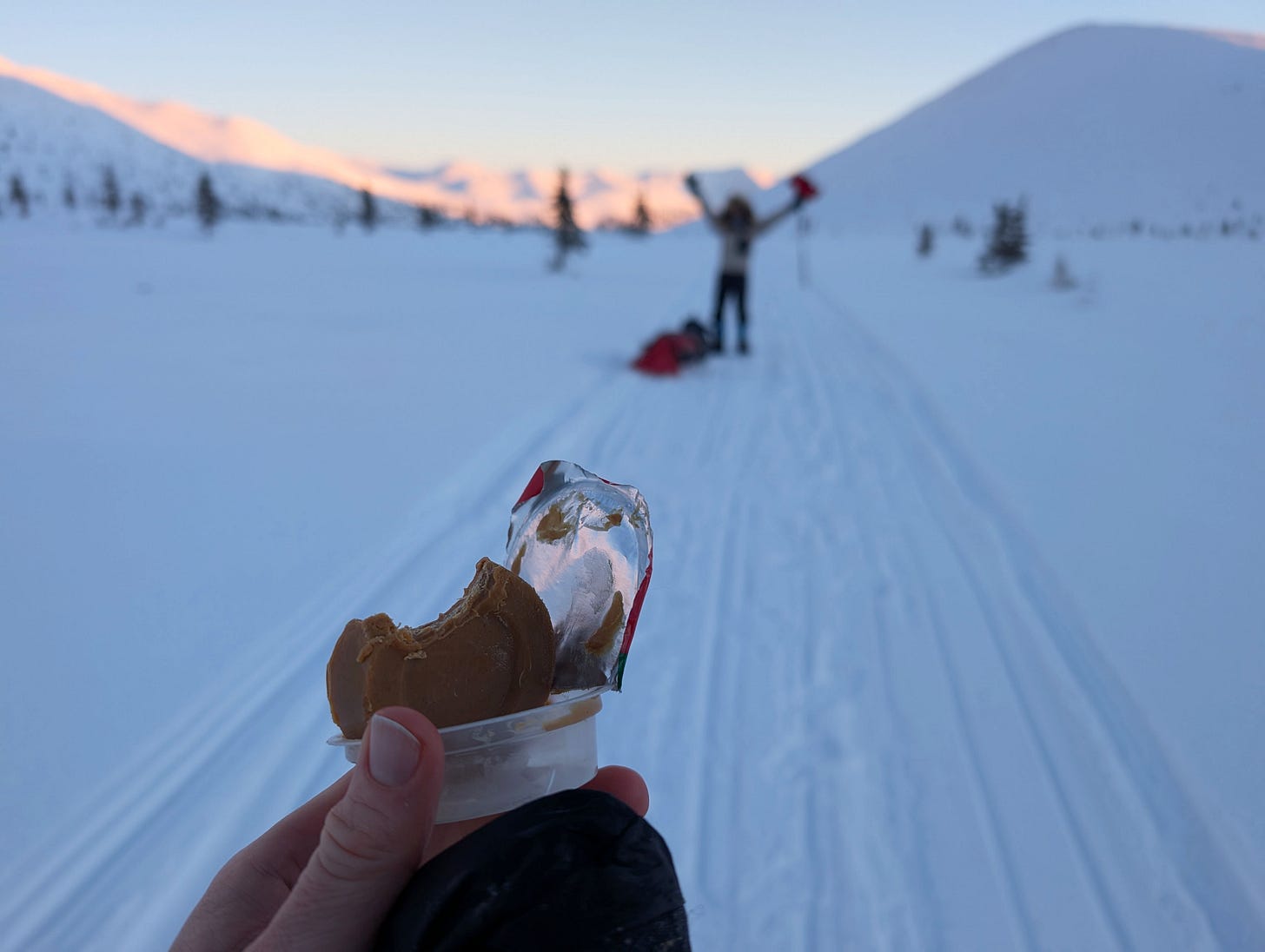
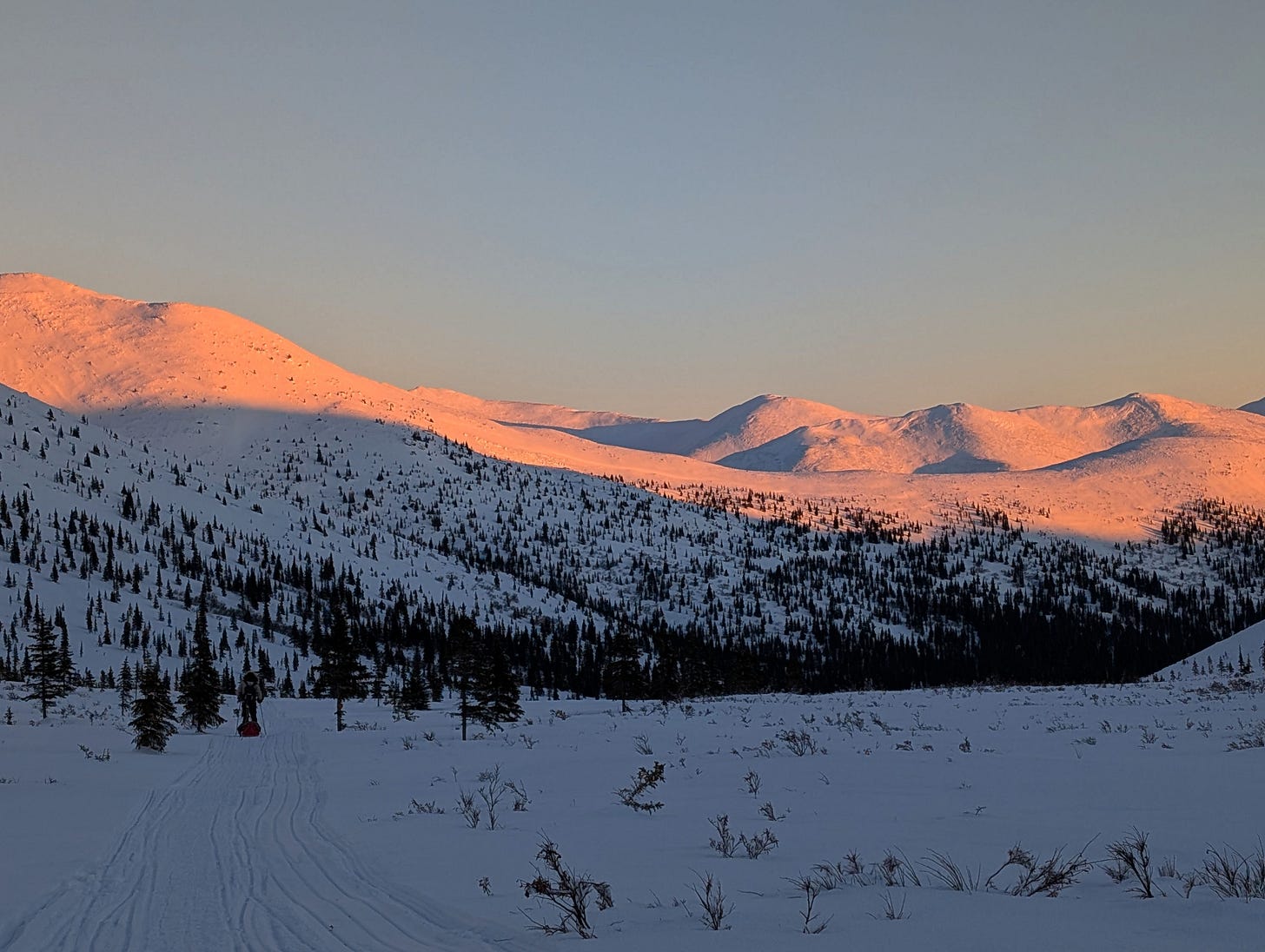
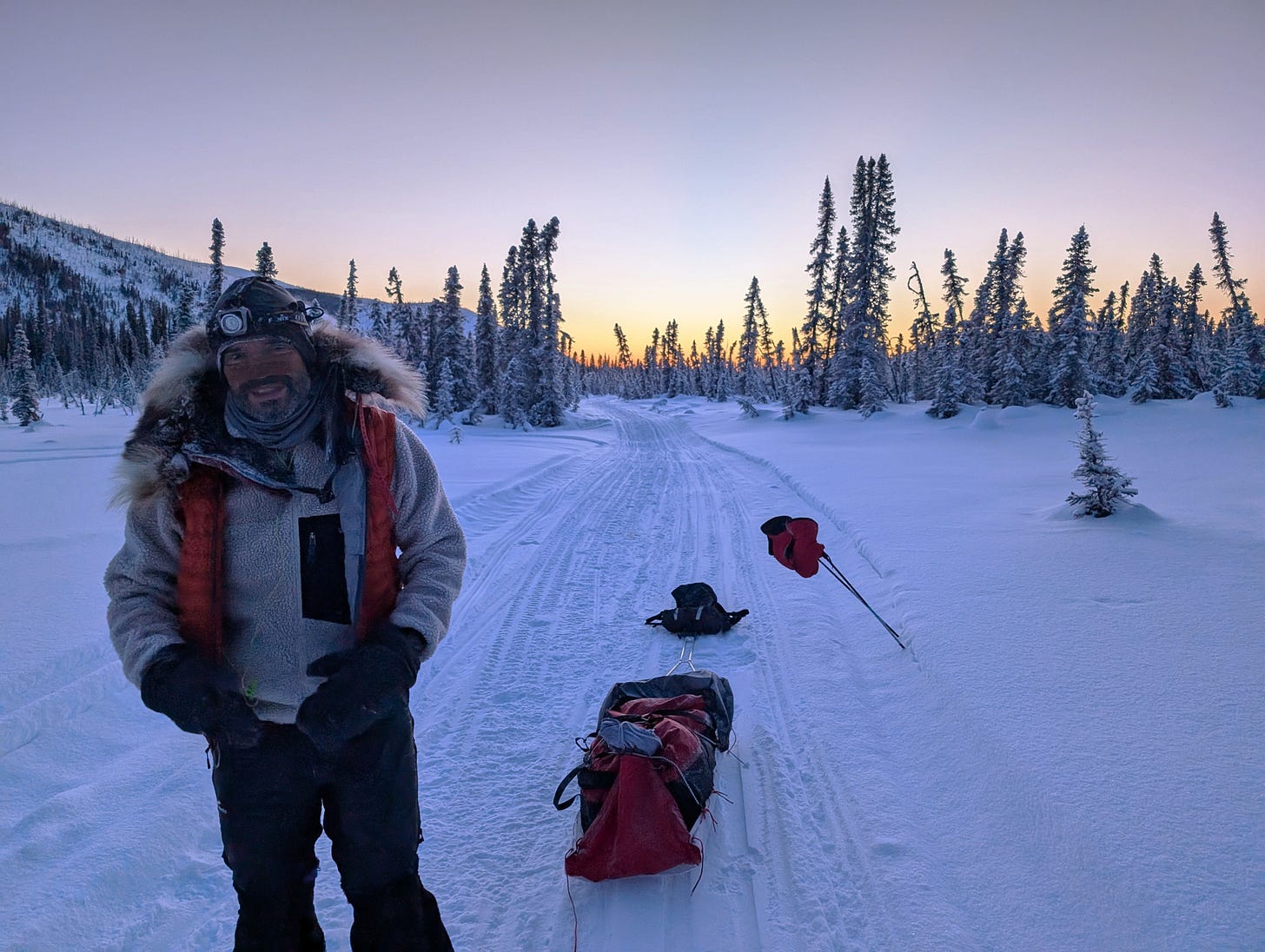
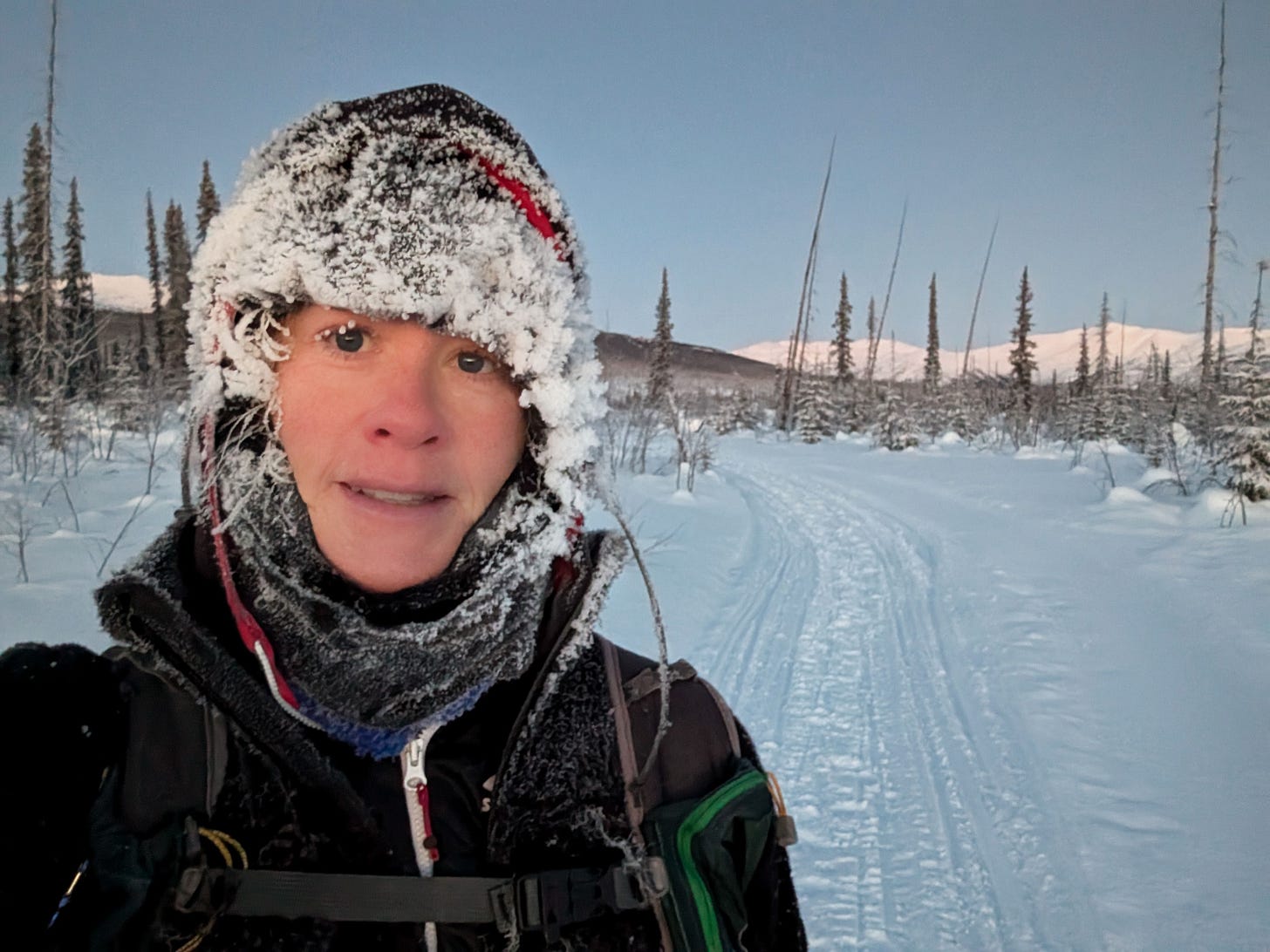
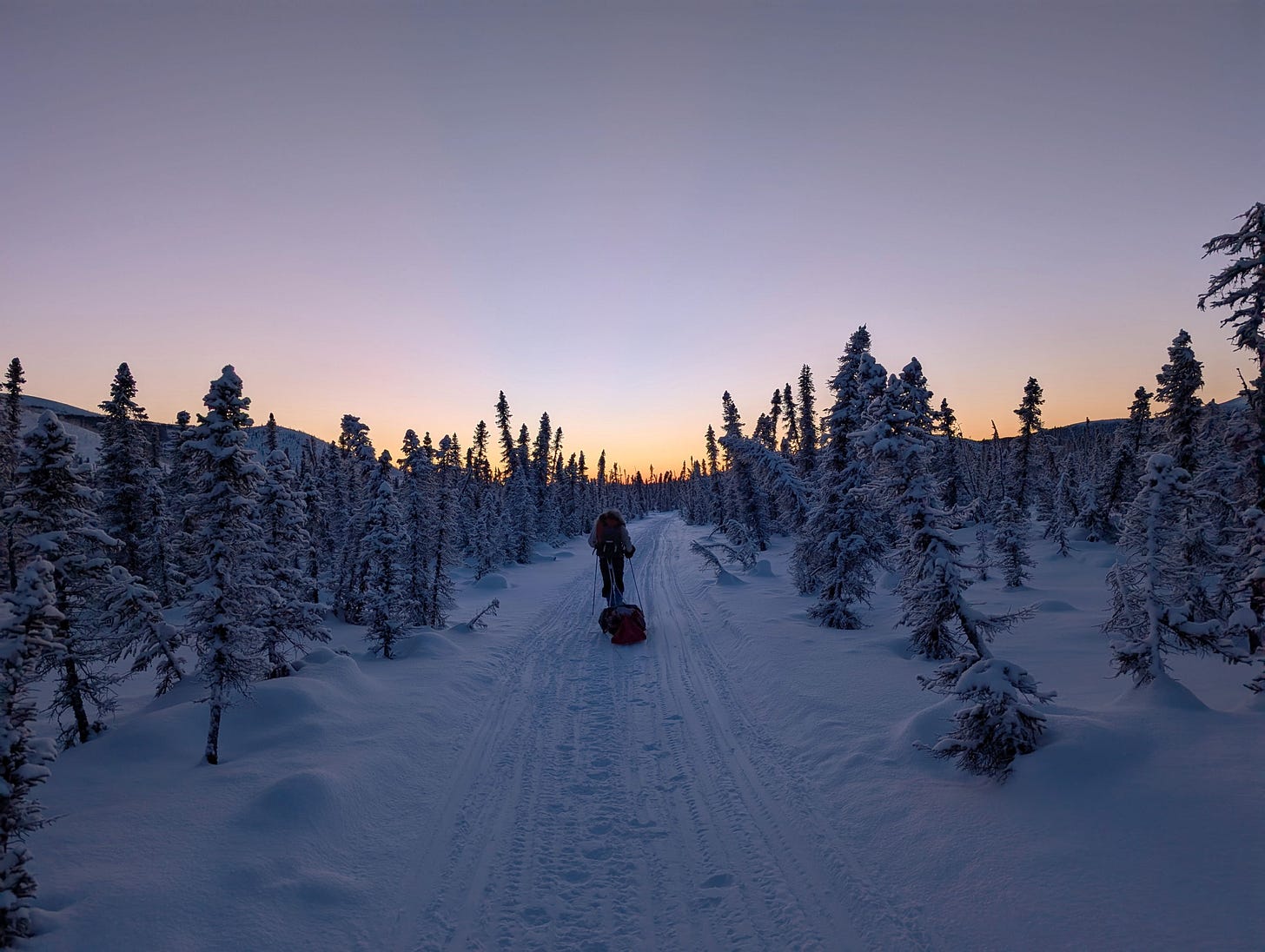

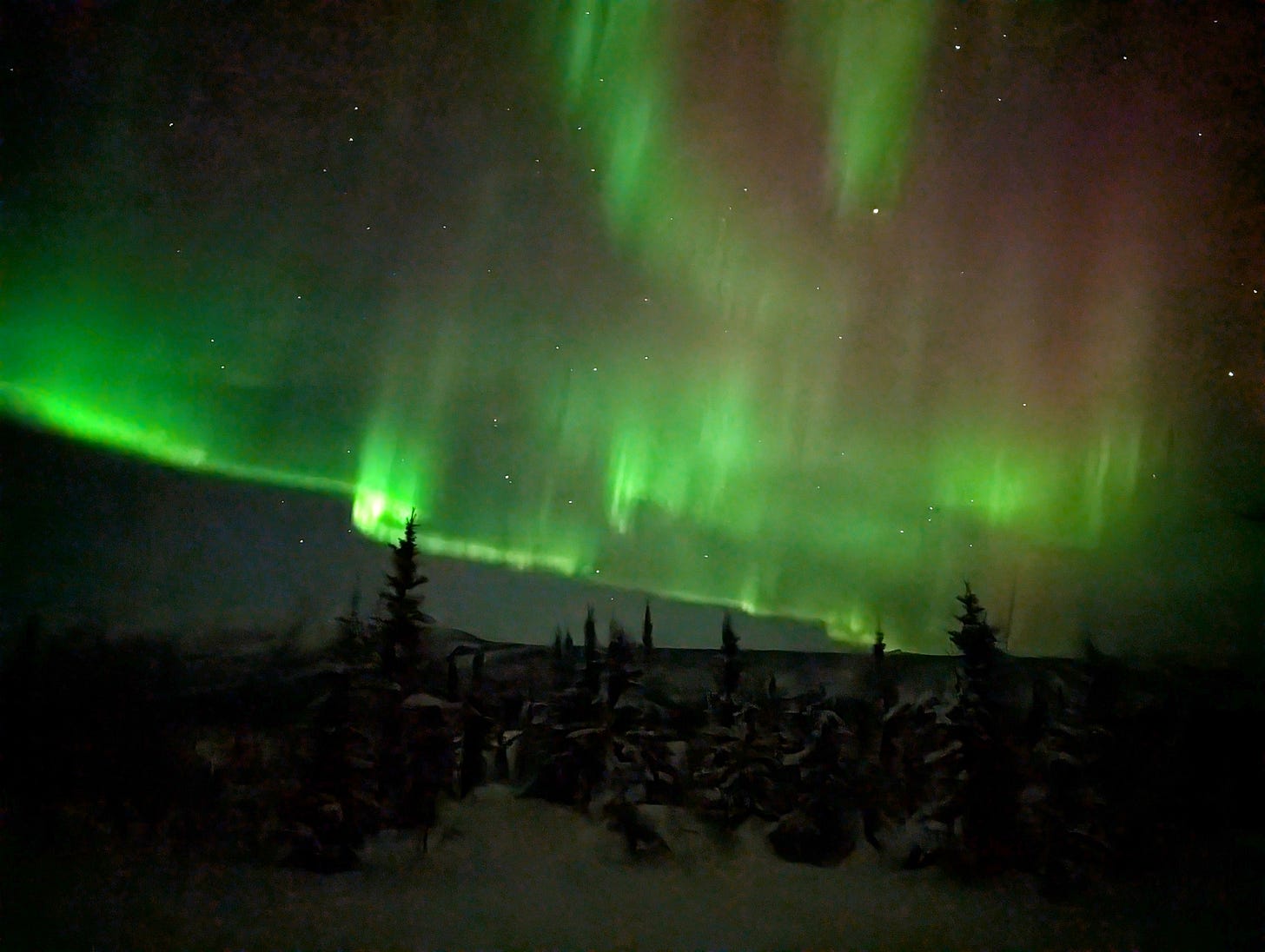
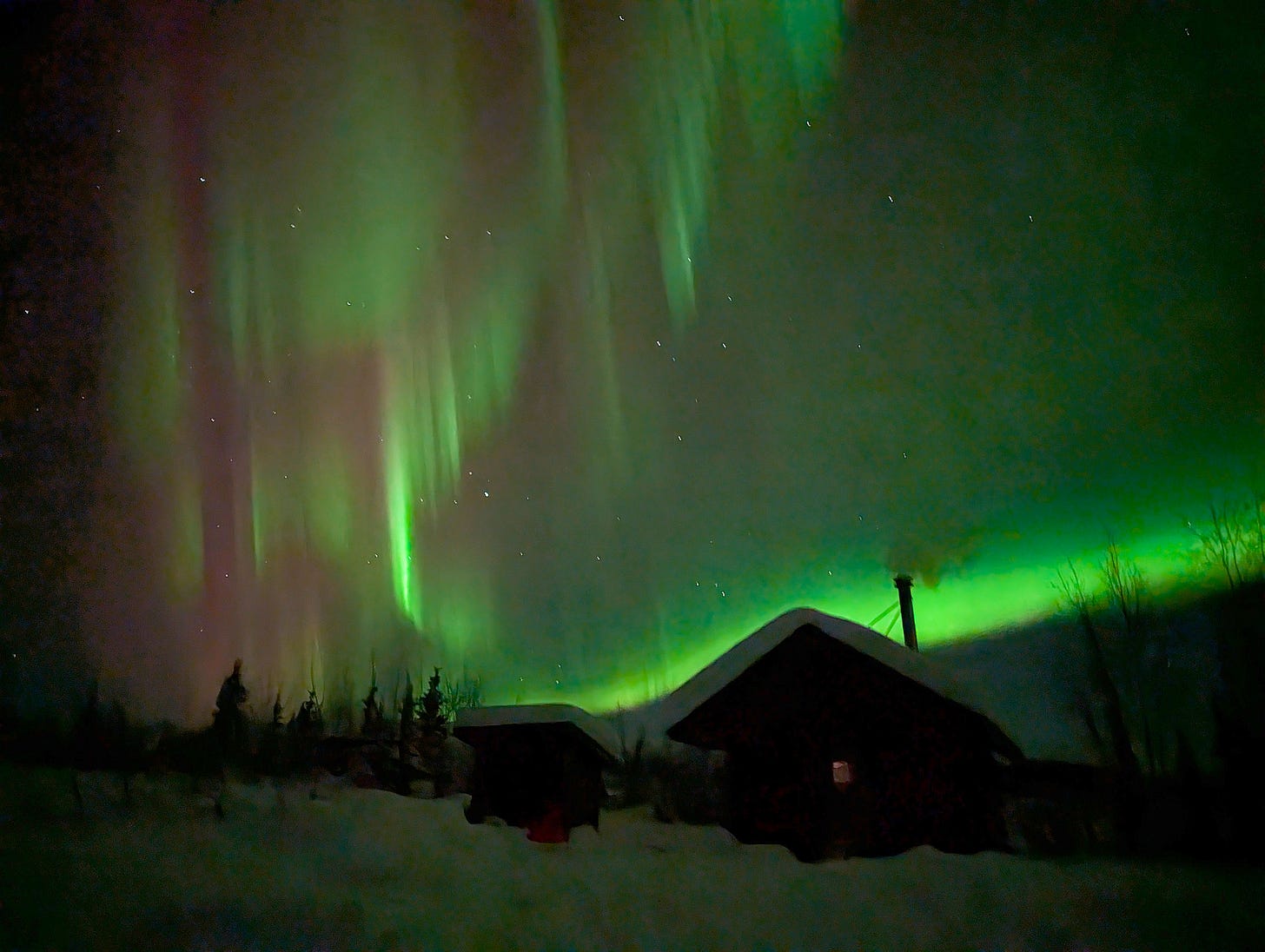
I have a question even though it might be awhile before I see your response. Do you see the Northern Lights as brilliantly with your naked eye as the camera does? We had NL this past year here in Iowa and people were commenting how beautiful they were. I could not see them at all!!! They then suggested to use my iPhone camera to see them.
What a beautifully written story, Jill. You made me feel like I was right there with you. I wish one day that I could experience such northern beauty.